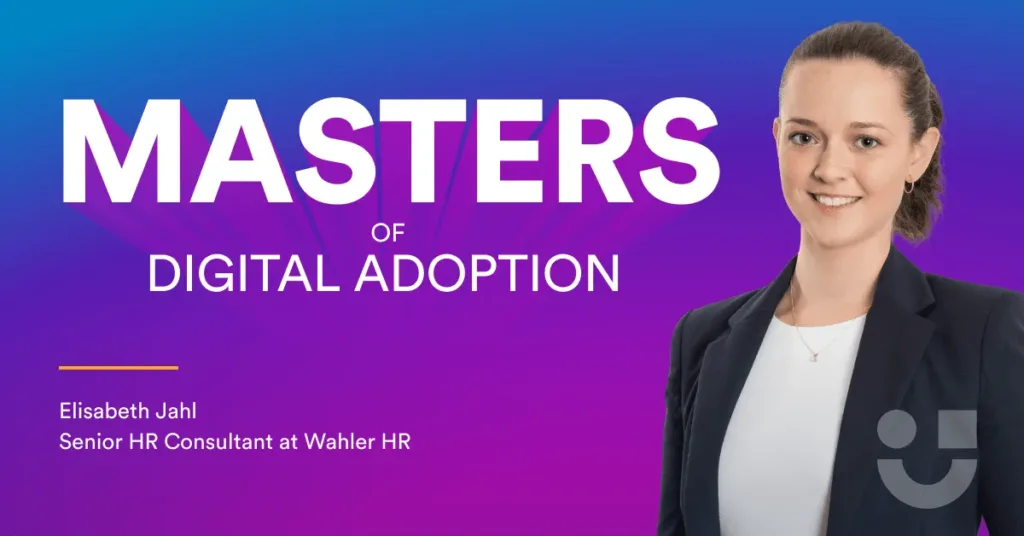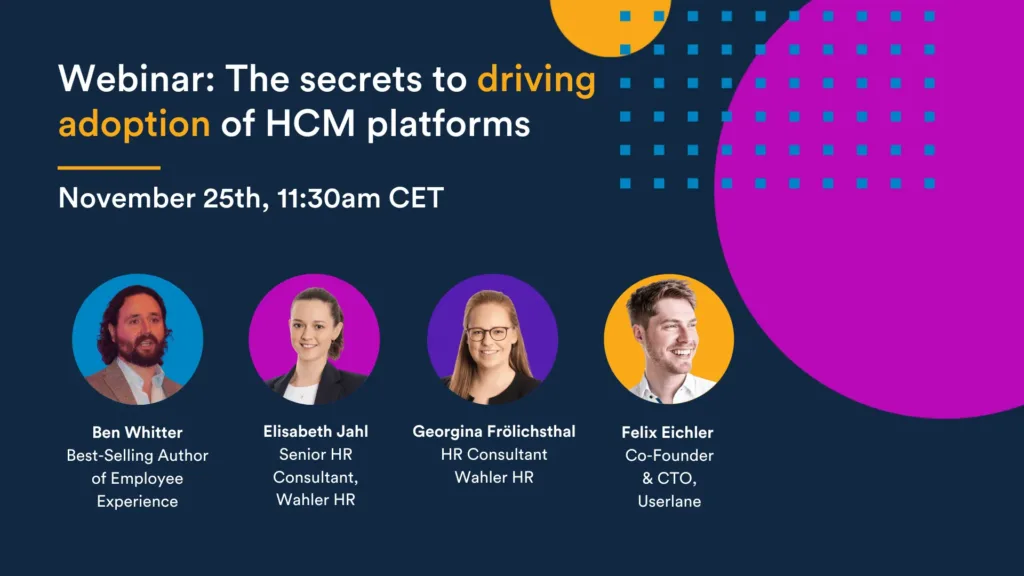Helping enterprises master digital adoption


At Wahler HR we help organizations of all sizes to digitize their HR functions, from choosing the best suited software to their needs, through to the implementation of the technology across the organization.
Typically, HR software is required to optimize the management of HR services, which can span from the management of employee data, to payroll administration and managing contracts. In some cases, it can extend to include employee performance data and reporting. As a result, HR software is intertwined with the whole employee lifecycle, amplifying the need for seamless digital adoption across all relevant stakeholders.
Looking back just a few years, programmes like Excel and Word were predominantly used by HR professionals, but as businesses scale and headcounts increased the limitations of these programmes became very clear. The level of administration required for data input and upkeep was not sustainable, and many businesses are now reaping the benefits of a digitized approach.
What we’ve witnessed at Wahler HR is a drive of digitization to not only reduce and simplify the administration workload but also to improve reliability for employees and the organization due to more reliable data. Enterprises are now experiencing the optimization and transformation capabilities that cloud-based software like SAP and Workday are able to offer.
However, you can invest in the best software on the market as part of your HR digital transformation strategy, but if it is not used by stakeholders, it will not have the desired effect.
Digital transformation needs to be underpinned by successful digital adoption. Technology can be both a boost and a burden to productivity. It all depends on implementing the technology or software successfully and getting employees and managers to use it effectively. Especially considering employees no longer just take services from HR, they actively participate in the management of their own data.
Creating agents of change within your organization in the initial stages of implementation will help you master digital adoption. These agents of change can consist of a selection of stakeholders across different departments who would be the end users of the technology. They can not only offer insights early on as to whether there is value added from the new technology by being involved in testing and research, but also act as advocates to drive digital adoption of the new software.
The following best practices unpack how agents of change can help you master digital adoption:
Table of Contents
1: Be clear on the required capabilities to select and execute the best software to meet your requirements
In the first instance, understanding what you need the technology to do is critical. This insight needs to come from the employees and managers who will actually be using the HR software. At this stage we would ask stakeholders what their needs and requirements are, and incorporate those into the process of choosing and implementing a software according to the organizations circumstances.
This works two-fold:
- Stakeholders buy into the process and feel like their views, expertise and experience are being listened to, and in turn advocate the implementation of the software.
- You can get a clear view of what the software capabilities need to be.
2: Create understanding amongst users
Ensuring that users know how the software will benefit them is a big part of the digital adoption puzzle. Your agents of change play a pivotal role in advocating these benefits through the organization. When employees are aware and understand that the planned digital changes can make their job simpler, allow them to work faster, and eliminate frustrations, it can feed a broader acceptance from early on in the process.
Looking further down the implementation journey, understanding how to practically use the software is another hurdle an organization needs to be prepared for. Forward-looking enterprises are now using Digital Adoption Platforms, like Userlane, that offer on-demand support to guide employees through digital processes in real-time, embedded in the application they’re using.
3: Ensure an openness to behavioural change
Overcoming resistance to change is a major factor in mastering digital adoption. You may have some employees that are excited by change, but naturally you will also face resistance from employees. To create an openness to change, consider these three tactics:
- Communication – keep lines of communication open from the outset. Keep employees in the loop of progress, but also listen to their concerns and feedback.
- Involvement – rather than thrusting change on people, ease them in. Involve them in testing phases so they can get to know the system early on.
- Support – knowing that they have the support of a Digital Adoption Platform can ease concerns around training and the impact it can have on their productivity.
Again, agents of change can be very helpful in creating an openness to behavioural change.
By considering these best practices in the implementation of new software, you can set your organization up to master digital adoption.
If I was to summarize, my one piece of advice for mastering HR digital adoption, is to execute sustainably. See it as a long road trip, rather than a weekend getaway.
Want to understand more about creating an openness to behavioural change in your organization? Join our upcoming webinar exploring the secrets to driving adoption of HCM platforms.
We will be joined by employee experience expert Ben Whitter, and Wahler HR consultants Elisabeth Jahl and Georgina Frölichsthal.
Register here now!


